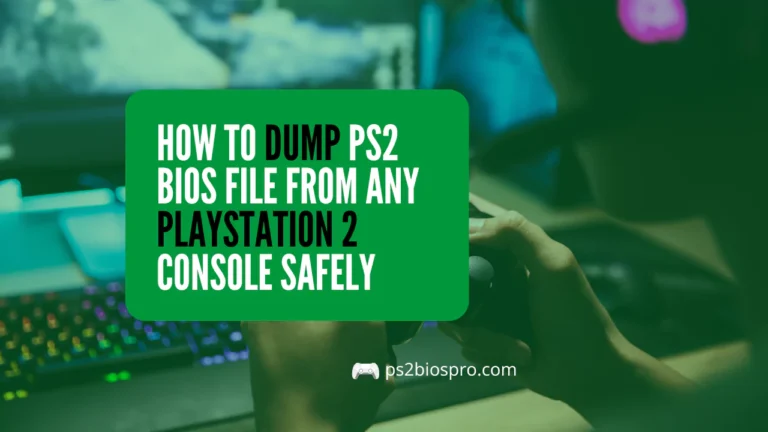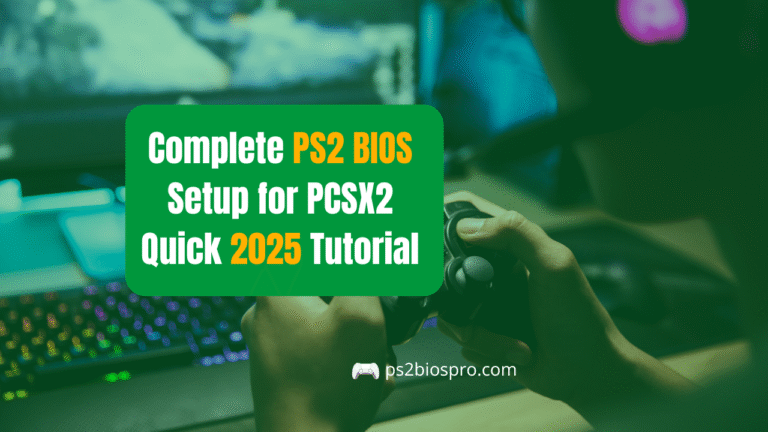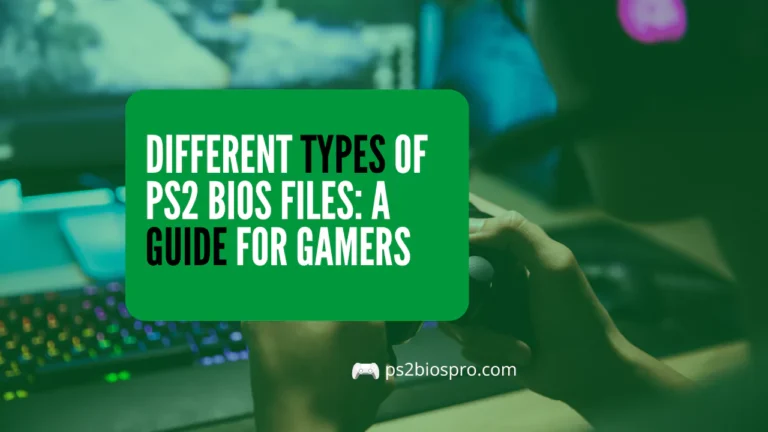Which PS2 BIOS to Use for Emulation? A Complete 2025 Guide
Key Takeaways
- Always use a BIOS that matches your game’s region (NTSC-U, NTSC-J, PAL) for smooth gameplay.
- Different BIOS versions affect performance, boot speed, and mod or cheat support.
- Keep multiple BIOS files handy for mixed ROM collections to avoid errors.
- Check emulator compatibility PCSX2, NetherSX2, Play!, and RetroArch may work better with specific BIOS versions.
- Low-end systems perform better with older BIOS (v1.60), while high-end systems benefit from newer versions (v2.00).
- Troubleshoot common issues like black screens, crashes, or slow FPS by verifying BIOS location, region, and file integrity.
THE PS2 BIOS to use for Emulation is crucial for smooth gameplay on your PC or Android device. Using the right BIOS ensures games load correctly, run without crashes, and maintain compatibility with your favorite PlayStation 2 titles. In this guide, we’ll cover versions, regions, emulator setup, and tips for error-free emulation.
What is PS2 Bios?
A PS2 BIOS (Basic Input/Output System) is the core software of the PlayStation 2. It starts the console, runs system checks, and loads games. In emulators, the BIOS recreates this process so games work just like they did on the original PS2, unlocking its full library on modern devices.
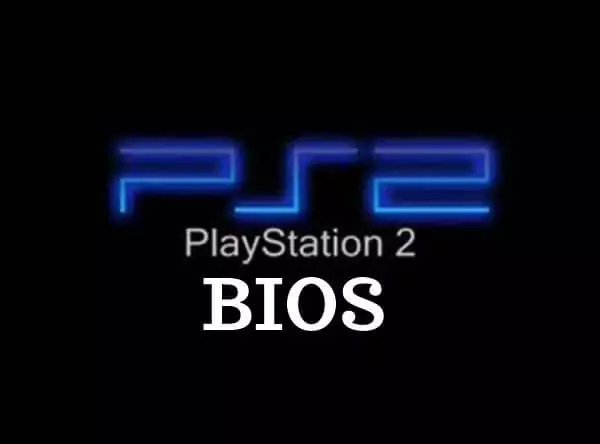
Purpose of a PS2 BIOS
The PS2 BIOS ensures games run properly by handling data loading, controller inputs, and graphics. In emulators like PCSX2, it recreates these functions on your PC and manages region settings. A reliable BIOS prevents crashes and keeps gameplay smooth.
Why is a BIOS Required for Emulation?
A PS2 BIOS is essential because it recreates the console’s internal system for emulators like PCSX2. It allows the game code to run correctly, manages hardware tasks, and prevents errors like freezes or lag. With the right BIOS, emulation stays accurate, smooth, and compatible across PS2 titles..
Which PS2 bios best to use
The best PS2 BIOS depends on your game’s region and emulator. Some Popular choices are like SCPH-39001 (USA), SCPH-50003 (Europe), and SCPH-10000 (Japan) offer reliable performance and compatibility. Using the right BIOS keeps games running smoothly and prevents crashes or errors. You can get them safely from Ps2biospro.com website.
PlayStation 2 BIOS Versions & Regional Variants
PS2 BIOS versions differ by region to match NTSC or PAL standards. NTSC-U (USA) runs at 60Hz, PAL (Europe) at 50Hz, and NTSC-J (Japan) supports region-specific games. Using the right BIOS ensures smooth performance, proper controls, and fewer crashes in titles like GTA: San Andreas.
Japan (NTSC-J) BIOS (e.g., SCPH-10000)
The NTSC-J BIOS runs Japanese PS2 consoles at 60Hz, with language defaults and region locks for local titles. It supports exclusives like Okami and Persona 3 and ensures smooth, error-free gameplay in emulators when paired with Japanese ROMs.
North America (NTSC-U) BIOS (e.g., SCPH-39001, SCPH-70012)
The NTSC-U BIOS runs US PS2 consoles at 60Hz with English defaults, supporting a wide range of North American games. Versions like SCPH-39001 and SCPH-70012 ensure smooth performance, proper audio sync, and stable gameplay for titles such as God of War and Metal Gear Solid 2.
Europe (PAL) BIOS (e.g., SCPH-50003, SCPH-75004)
PAL BIOS runs European PS2 games at 50Hz with multi-language support. It ensures smooth gameplay in titles like Pro Evolution Soccer and prevents black screens, though NTSC games may run slower.
Other Region BIOS (Asia/Oceania variants)
Asia and Oceania BIOS, like SCPH-70000 (China) and SCPH-50000 (Oceania), ensure smooth gameplay for regional PS2 games. They handle region locks and menus, preventing loading issues in emulators and allowing global titles to run correctly.
Factors to Consider When Choosing a PS2 BIOS
Choose a PS2 BIOS based on region, game compatibility, emulator support, and system performance. The right BIOS prevents crashes, slow loading, and black screens, while supporting mods and cheats for smooth gameplay.
1. Region Match for Smooth Setup
Always use a BIOS that matches your game’s region—NTSC-J for Japanese, NTSC-U for North American, and PAL for European titles. The wrong BIOS can cause black screens or sound issues, so check your ROM’s region before playing.
2. Game Compatibility
Choose a BIOS that fits the game’s needs—v1.60 works well for older titles like Tekken 4, while v2.00 suits complex games like God of War II. Testing in debug mode helps spot glitches and ensures smoother gameplay.
3. Your ROM Collection
Pick BIOS based on your ROMs SCPH-70012 for US games like Silent Hill 2, PAL BIOS for European titles like Gran Turismo 3. For mixed libraries, keep multiple BIOS files organized for easy switching.
4. Emulator Compatibility
BIOS choice also depends on the emulator:
5. Performance & Stability
BIOS affects game speed and stability. v2.00 runs demanding games smoothly on high-end PCs, while v1.60 keeps older systems stable. Always monitor FPS and avoid overclocking to prevent crashes.
6. Mods & Cheats
Newer BIOS like v1.90 support mods and cheat codes efficiently. It allows texture packs in games like Final Fantasy X and custom codes in Resident Evil 4. Ensure your emulator supports custom codes and check community guides for BIOS-specific mods.
7. Boot Speed
BIOS affects how fast a game loads. SCPH-75004 can start Tekken 5 in under 10 seconds on modern PCs, while older versions like v1.60 may load slower, especially on Android. Choosing the right BIOS improves startup times and reduces waiting.
Top PS2 BIOS Versions
Popular PS2 BIOS versions like v1.60, v1.70, v1.90, and v2.00 each offer unique benefits for emulation. Different versions suit different games and setups, affecting speed, stability, and mod support. Understanding their strengths and limitations helps you pick the best BIOS for smooth gameplay across your PS2 collection.
BIOS v1.60
Example: SCPH-39001
Ideal for early PS2 titles like Tekken 4. It offers fast load times and smooth performance on low-end PCs. However, it may struggle with newer or complex games, and mod support is limited.
Pros
Cons
BIOS v1.70
Example: SCPH-50000
Suitable for a mix of older and moderately new games. Runs titles like Resident Evil 4 reliably and supports basic mods. Some glitches may occur with PAL region games or high-demand titles.
Pros
Cons
BIOS v1.90
Example: SCPH-70012
Designed for newer PS2 games. Provides crisp visuals and cheat support, making it great for modern PCs. On low-end systems, it may boot slower and could face minor compatibility issues with NTSC-J titles.
Pros
Cons
BIOS v2.00
Example: SCPH-75004
Powers slim PS2 models with excellent speed. Handles mods efficiently and loads demanding games like Metal Gear Solid 3 quickly. Early titles may have compatibility issues, and a powerful system is recommended.
Pros
Cons
2025 Best PS2 BIOS Picks
Choosing the right PS2 BIOS in 2025 ensures smooth emulation across PCSX2, NetherSX2, Play! and RetroArch, supporting games like God of War II, Kingdom Hearts II, and Tekken 4. Updated emulator patches, Vulkan renderer support, and Android optimizations make certain BIOS versions stand out for stability, speed, and compatibility. Below are recommended BIOS picks for each platform and system type.
PCSX2 Recommendations
For PCSX2, SCPH-70012 (v1.90) works great with Kingdom Hearts II, using 2025’s Vulkan updates for smooth 60FPS gameplay and 4K graphics. SCPH-39001 (v1.60) is better for older PCs, running Tekken 4 without putting too much load on the CPU. Using Vulkan and adjusting speed hacks on high-end desktops improves performance even more.
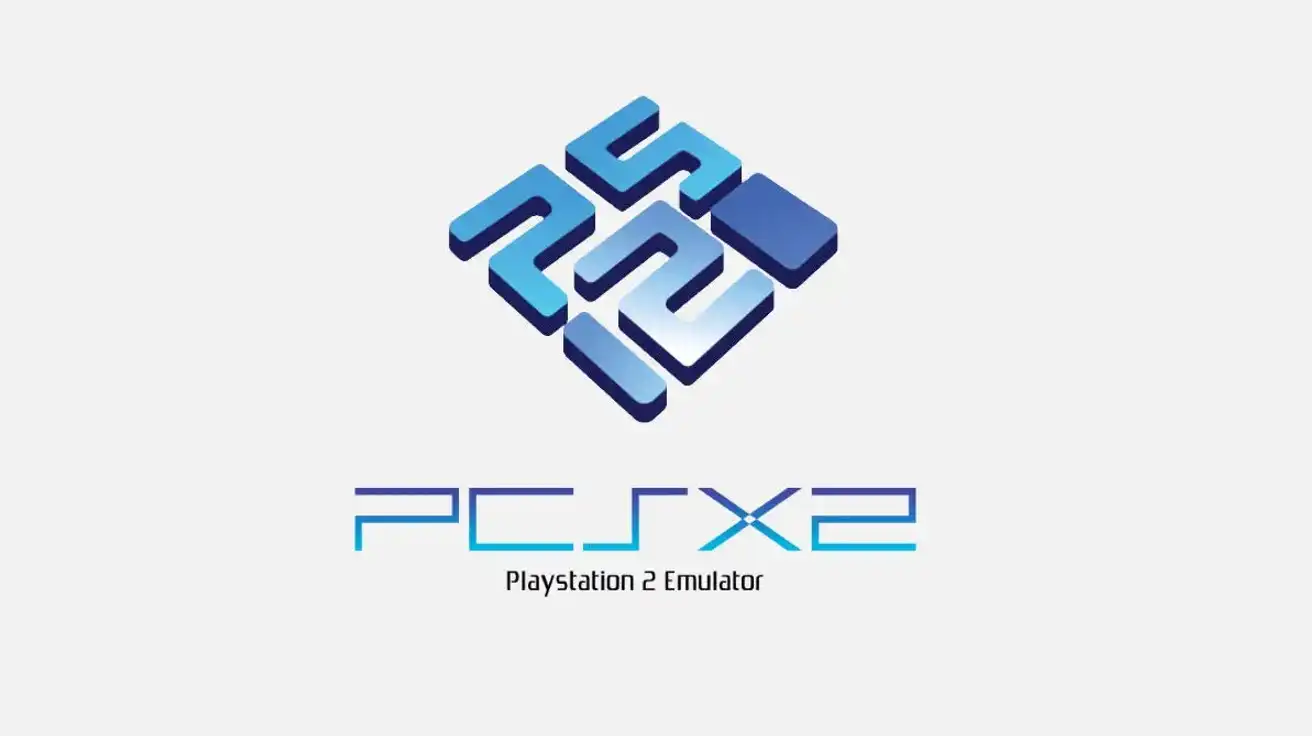
NetherSX2 Recommendations
On Android, NetherSX2 works best with SCPH-70012 (v1.90) for GTA: San Andreas, as 2025 updates fix touch lag and improve battery life on mid range phones. SCPH-50000 (v1.70) keeps Persona 3 stable on budget devices and prevents overheating. Using v1.90 also runs Resident Evil 4 smoothly. For older phones, underclocking helps maintain stable performance.
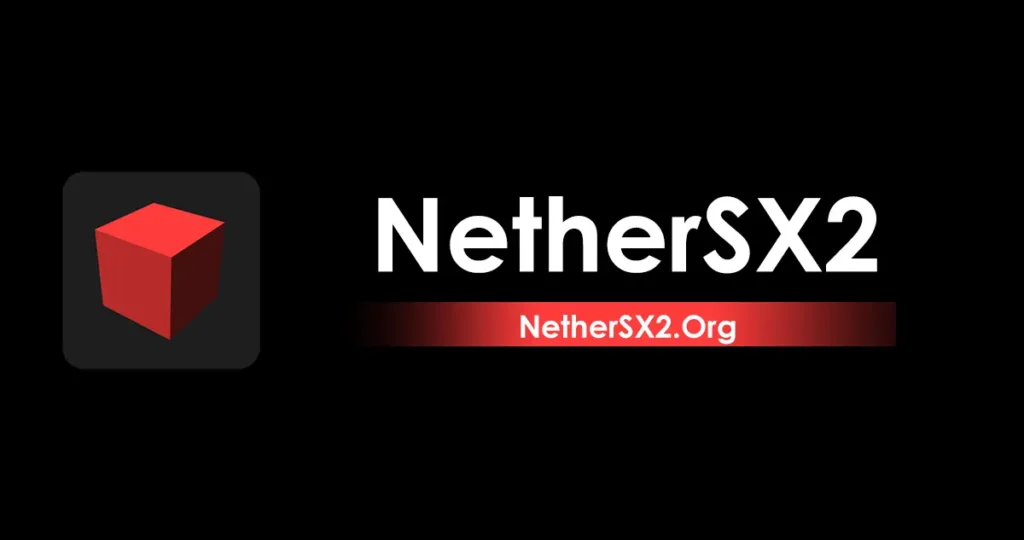
Play! and RetroArch Recommendations
For Play! SCPH-75004 (v2.00) works best for Okami across platforms, taking advantage of 2025 updates for iOS and Linux. RetroArch/LRPS2 prefers SCPH-50000 (v1.70) for Persona 4, with Vulkan shaders improving visuals. Play! is lightweight and great for laptops, while RetroArch handles multi system setups efficiently. Always test both for shader and compatibility in 2025 versions.
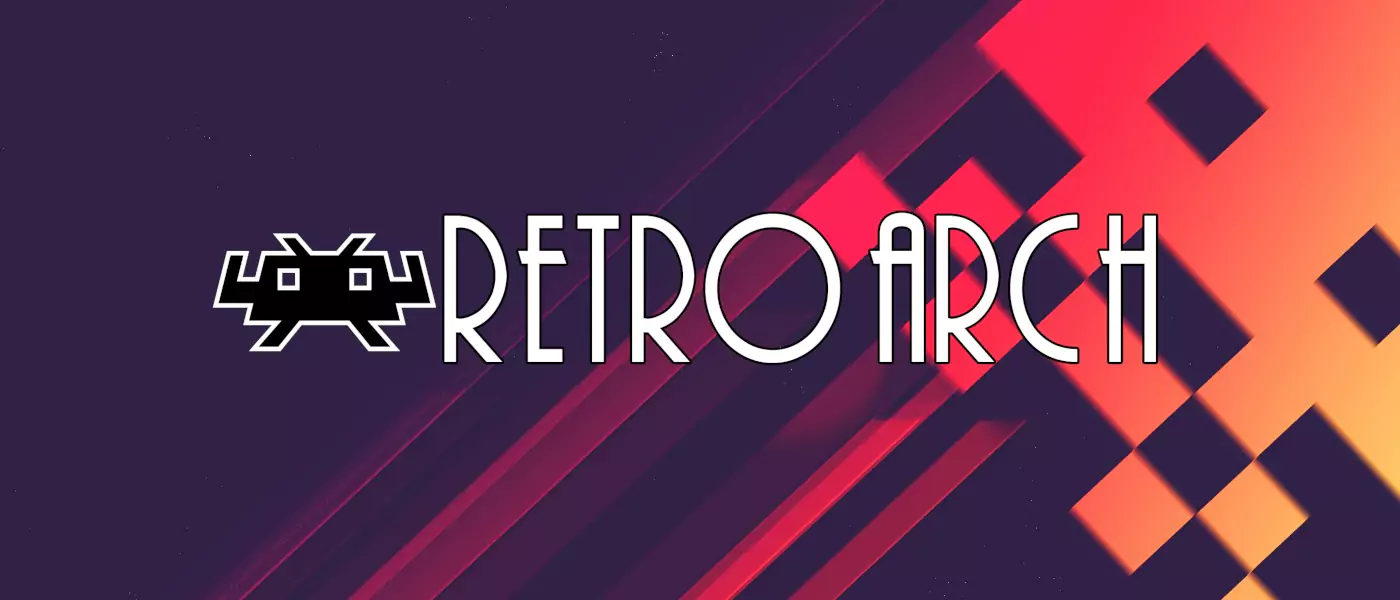
Low-End vs. High-End Systems
Low-end PCs with 4GB RAM and basic CPUs perform best with SCPH-39001 (v1.60), running games like Sly Cooper smoothly and reducing lag on older laptops. High end systems with 16GB+ RAM and i5 or better CPUs benefit from SCPH-75004 (v2.00), ideal for Metal Gear Solid 3, supporting mods and 4K gameplay. Even on budget machines, v1.60 keeps classics stable, while high end rigs can take advantage of 2025’s ray tracing and visual enhancements.
Emulator/System | Best BIOS | Key Features | Best For Games |
|---|---|---|---|
PCSX2 | SCPH-70012, SCPH-39001 | 4K upscaling, low-spec stability | Kingdom Hearts II, Tekken 4 |
NetherSX2 | SCPH-70012, SCPH-50000 | Touch lag fixes, battery optimization | GTA: San Andreas, Persona 3 |
Play! | SCPH-75004 | Cross-platform, lightweight | Okami |
RetroArch/LRPS2 | SCPH-50000 | Shader support, multi-system | Persona 4 |
Low-End Systems | SCPH-39001 | Minimal lag, stable | Sly Cooper |
High-End Systems | SCPH-75004 | High-res mods, ray tracing | Metal Gear Solid 3 |
This table guides your PS2 BIOS selection for optimal 2025 emulation.
PS2 Emulator BIOS Setup
Setting up a PS2 BIOS in an emulator is straightforward but requires care to avoid errors. Download the latest emulator version, place your chosen BIOS in the correct folder, and select it in the emulator’s settings. Testing with a simple game ensures everything runs smoothly before diving into more demanding titles.
Steps to Set Up PS2 BIOS:
- Install emulator (e.g., PCSX2 from official site).
- Create a “bios” folder in app data or install path.
- Copy BIOS file into the folder.
- Open emulator, go to Config > BIOS Selector.
- Choose BIOS and set region if prompted.
- Load ROM and adjust graphics (Vulkan recommended).
- Save config for future sessions.
Troubleshooting BIOS Issues
When you encounter common PS2 BIOS issues, simple adjustments can often fix the problem. Black screens typically indicate a region mismatch, while crashes at boot may require a BIOS update or disabling certain hacks. Slow FPS or missing sound can be solved by checking performance settings and BIOS configuration. Always verify the integrity of your BIOS file to ensure smooth gameplay.
Common Fixes
Conclusion
The SCPH-70012 BIOS is the top pick for PS2 emulation in 2025, offering near-perfect compatibility and smooth performance in PCSX2. Throughout this guide, we covered how BIOS powers accurate hardware simulation, the best versions by region and emulator, and full setup instructions for PCSX2, AetherSX2, and RetroArch. We also solved common issues like black screens, FPS drops, and sound errors.
Frequently Asked Questions
Can I Use Any PS2 BIOS with Any Game?
No, you need a BIOS that matches the game’s region—NTSC-U for USA, NTSC-J for Japan, PAL for Europe. Wrong BIOS can cause crashes or black screens.
Can I Switch Between BIOS Files Later?
Yes, you can switch anytime in the emulator. Just select the new BIOS from the settings and restart the emulator.
Do Different BIOS Versions Affect Performance?
Yes, newer BIOS may run better on powerful PCs, while older BIOS work fine on low-end systems. Choose according to your PC or device.
Do I Need Multiple BIOS Files for Better Compatibility?
Yes, keeping multiple BIOS helps run games from different regions without errors. Store them in the emulator’s BIOS folder.
Why Does My Emulator Say “Insert PS2 Disc” Even with a BIOS File?
This happens if the emulator can’t find the game or BIOS. Check your ISO file and select the correct BIOS in settings.


